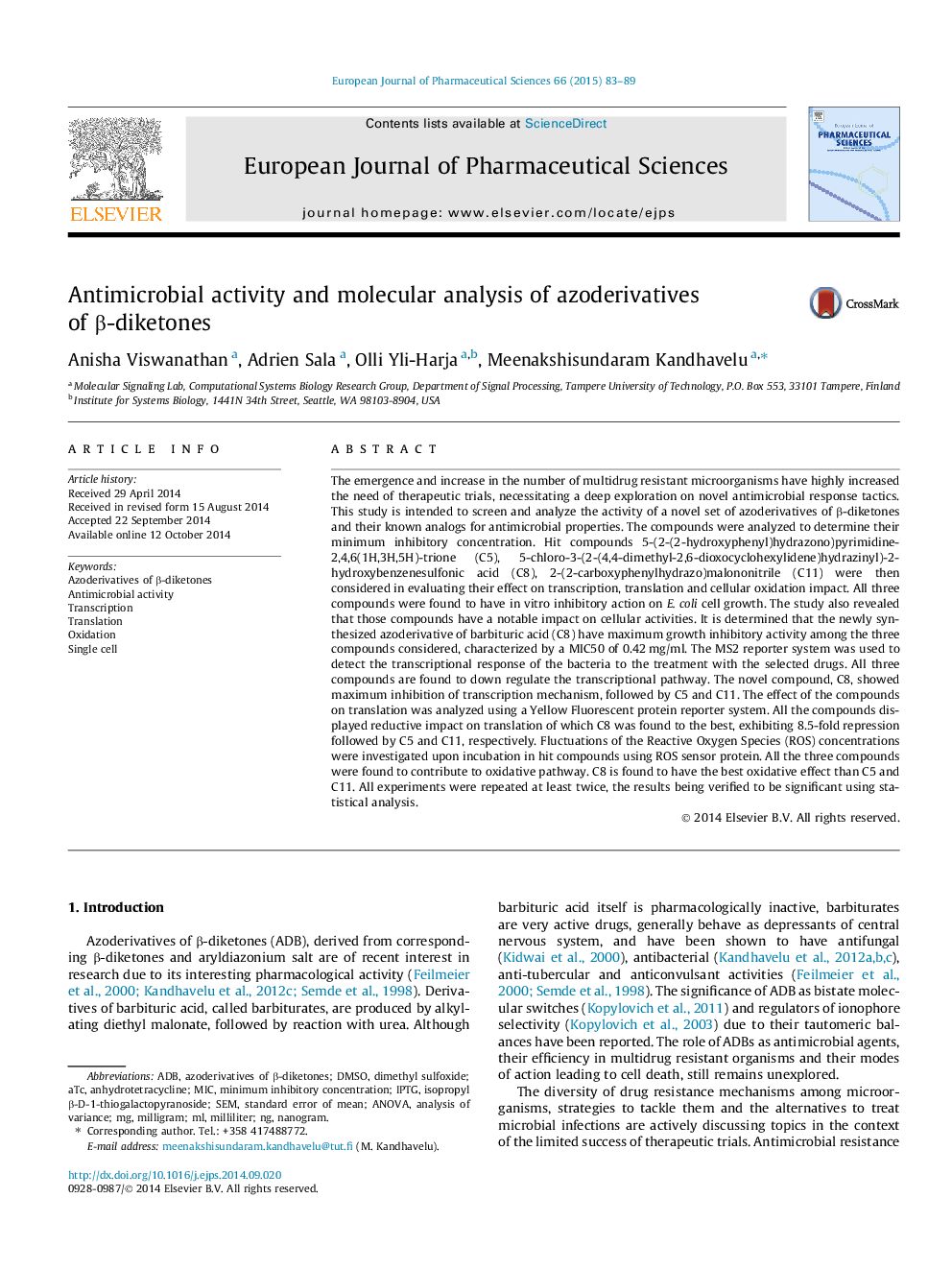| کد مقاله | کد نشریه | سال انتشار | مقاله انگلیسی | نسخه تمام متن |
|---|---|---|---|---|
| 2480429 | 1556184 | 2015 | 7 صفحه PDF | دانلود رایگان |

The emergence and increase in the number of multidrug resistant microorganisms have highly increased the need of therapeutic trials, necessitating a deep exploration on novel antimicrobial response tactics. This study is intended to screen and analyze the activity of a novel set of azoderivatives of β-diketones and their known analogs for antimicrobial properties. The compounds were analyzed to determine their minimum inhibitory concentration. Hit compounds 5-(2-(2-hydroxyphenyl)hydrazono)pyrimidine-2,4,6(1H,3H,5H)-trione (C5), 5-chloro-3-(2-(4,4-dimethyl-2,6-dioxocyclohexylidene)hydrazinyl)-2-hydroxybenzenesulfonic acid (C8), 2-(2-carboxyphenylhydrazo)malononitrile (C11) were then considered in evaluating their effect on transcription, translation and cellular oxidation impact. All three compounds were found to have in vitro inhibitory action on E.coli cell growth. The study also revealed that those compounds have a notable impact on cellular activities. It is determined that the newly synthesized azoderivative of barbituric acid (C8) have maximum growth inhibitory activity among the three compounds considered, characterized by a MIC50 of 0.42 mg/ml. The MS2 reporter system was used to detect the transcriptional response of the bacteria to the treatment with the selected drugs. All three compounds are found to down regulate the transcriptional pathway. The novel compound, C8, showed maximum inhibition of transcription mechanism, followed by C5 and C11. The effect of the compounds on translation was analyzed using a Yellow Fluorescent protein reporter system. All the compounds displayed reductive impact on translation of which C8 was found to the best, exhibiting 8.5-fold repression followed by C5 and C11, respectively. Fluctuations of the Reactive Oxygen Species (ROS) concentrations were investigated upon incubation in hit compounds using ROS sensor protein. All the three compounds were found to contribute to oxidative pathway. C8 is found to have the best oxidative effect than C5 and C11. All experiments were repeated at least twice, the results being verified to be significant using statistical analysis.
Figure optionsDownload high-quality image (146 K)Download as PowerPoint slide
Journal: European Journal of Pharmaceutical Sciences - Volume 66, 23 January 2015, Pages 83–89